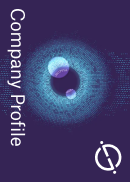At the ongoing American Society of Clinical Oncology (ASCO) Annual Meeting, being held 31 May—4 June, primary results were presented for the PALOMA-3 study investigating a subcutaneous formulation (SC) for Johnson and Johnson Innovative Medicine’s (J&J) bispecific antibody Rybrevant (amivantamab).
Rybrevant, which targets epidermal growth factor receptor (EGFR) and mesenchymal-epithelial transition (MET), is being evaluated in combination with third-generation EGFR tyrosine kinase inhibitor (TKI) Leclaza (lazertinib) for metastatic non-small cell lung cancer (NSCLC), harbouring epidermal growth factor receptor (EGFR) exon 19 deletion (exon 19del) or exon 21 L858R substitution mutations who progressed on AstraZeneca’s Tagrisso (osimertinib) or another 3rd generation tyrosine kinase inhibitor (TKI) and platinum-based chemotherapy. The regimen was previously evaluated with the addition of chemotherapy for the same patient segment in the MARIPOSA-2 trial and demonstrated statistically significant improvement in progression-free survival (PFS) compared with chemotherapy.
Physicians have expressed concern regarding the intravenous formulation (IV) of Rybrevant that may require split dosing, prolonged infusion times, and infusion-related adverse events (IRAE). This led to the company sponsoring a Phase I PALOMA study in which only 16% of patients who received the subcutaneous formulation experienced an IRAE notably, all Grade 1 or Grade 2. J&J expected similar findings when it initiated the PALOMA-3 study pitting amivantamab (SC) + lazertinib against amivantamab (IV) + lazertinib, except in a larger patient pool. The study primarily measured the SC formulation’s concentration trough (Ctrough) or the lowest serum concentration immediately before the next dosing and was observed to be non-inferior.
The secondary efficacy endpoint data now have the field abuzz. While the objective response rate (ORR) was similar in both arms (SC 30.1% vs IV 32.5%), the median duration of response (DoR) was higher in the SC arm (11.2 months vs 8.3 months). Additionally, the median PFS benefit of the SC formulation, was 6.1 months vs 4.3 months (hazard ratio [HR], 0.84) and improved overall survival with the SC version (hazard ratio [HR], 0.62; 95% confidence interval [CI]: 0.42–0.92). At 12 months, 65% of patients on the SC arm were alive vs 51% who received IV. Infusion-related reactions in the SC arm were observed in 13% of patients vs 66% in the IV arm.
The Phase II PALOMA-2 study evaluates the SC-formulated regimen for front-line patients. In the Phase III MARIPOSA study the combination showed superior efficacy compared with Tagrisso. Based on that study, the company submitted a supplemental Biologics License Application (sBLA).
Rybrevant, recently approved for EGFR-mutated mNSCLC patients with an exon 20 insertion, is predicted to generate $4bn in sales by 2030 of which over half will come from the combination regimen according to GlobalData. Although the combination is not currently approved or has a pending sBLA in the post-osimertinib setting, J&J announced it is submitting a line extension to the European Medicines Agency (EMA) for SC amivantamab + lazertinib in the front-line, and SC amivantamab monotherapy for exon 20 insertion mutations. J&J will submit regulatory applications for the approval of SC amivantamab in the US and other markets. The prospect of a subcutaneous formulation that is better tolerated and has additional clinical benefits can only increase its utilisation.
Access the most comprehensive Company Profiles
on the market, powered by GlobalData. Save hours of research. Gain competitive edge.

Company Profile – free
sample
Your download email will arrive shortly
We are confident about the
unique
quality of our Company Profiles. However, we want you to make the most
beneficial
decision for your business, so we offer a free sample that you can download by
submitting the below form
By GlobalData
<!–
–>
Visit our Privacy Policy for more information about our services, how we may use, process and share your personal data, including information of your rights in respect of your personal data and how you can unsubscribe from future marketing communications. Our services are intended for corporate subscribers and you warrant that the email address submitted is your corporate email address.
- SEO Powered Content & PR Distribution. Get Amplified Today.
- PlatoData.Network Vertical Generative Ai. Empower Yourself. Access Here.
- PlatoAiStream. Web3 Intelligence. Knowledge Amplified. Access Here.
- PlatoESG. Carbon, CleanTech, Energy, Environment, Solar, Waste Management. Access Here.
- PlatoHealth. Biotech and Clinical Trials Intelligence. Access Here.
- Source: https://www.clinicaltrialsarena.com/analyst-comment/asco-24-data-shows-survival-benefit-with-jjs-subcutaneous-rybrevant/
